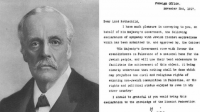
Links
Sheba Medical Centre
Melanie Phillips
Shariah Finance Watch
Australian Islamist Monitor - MultiFaith
West Australian Friends of Israel
Why Israel is at war
Lozowick Blog
NeoZionoid The NeoZionoiZeoN blog
Blank pages of the age
Silent Runnings
Jewish Issues watchdog
Discover more about Israel advocacy
Zionists the creation of Israel
Dissecting the Left
Paula says
Perspectives on Israel - Zionists
Zionism & Israel Information Center
Zionism educational seminars
Christian dhimmitude
Forum on Mideast
Israel Blog - documents terror war against Israelis
Zionism on the web
RECOMMENDED: newsback News discussion community
RSS Feed software from CarP
International law, Arab-Israeli conflict
Think-Israel
The Big Lies
Shmloozing with terrorists
IDF ON YOUTUBE
Israel's contributions to the world
MEMRI
Mark Durie Blog
The latest good news from Israel...new inventions, cures, advances.
support defenders of Israel
The Gaza War 2014
The 2014 Gaza Conflict Factual and Legal Aspects
To get maximum benefit from the ICJS website Register now. Select the topics which interest you.
Why are there still Palestinian refugees
Visit Israel and you’ll be startled by how many colors you’ll see. I don’t mean the colors of the buildings or landscape; I mean the colors of the people -- black, white, olive, brown and everything in between. Israel is a true United Nations. That’s because Israel is a nation of refugees -- from everywhere.
And more than half of them are from -- are you ready? -- Arab countries.
Over 850,000 Jews were expelled or fled from the Middle East and North Africa following the Arab countries’ attack on Israel when it gained its independence in 1948.
For over two thousand years these Jews had lived in the Arab countries of Morocco, Algeria, Tunisia, Libya, Egypt, Yemen, Syria, Lebanon, and Iraq -- and in the Muslim but non-Arab countries such as Turkey and Iran. Today, they form over half of Israel’s Jewish population.
Many of these Jews from Middle Eastern lands look, well, just like other people from Middle Eastern lands -- of darker complexion with dark hair. Other Jews migrated from North Africa. So, why is their story so unfamiliar to most people?
The most important reason is that they didn’t remain refugees for long. But refugees they most certainly were: the vast majority forced to leave their homes, possessions and businesses behind. In other words, they came to Israel with nothing.
Some 650,000 of the Jews forced to flee North Africa and the Middle East became citizens of Israel. The other 200,000 fled to the United States and other Western countries.
To give you an idea of how few Jews remain in Arab countries, consider these numbers: There were 150,000 Jews in Iraq in 1948; today there are less than 10. There were 140,000 Jews in Algeria; today there are less than 50. There were 75,000 Jews in Egypt; today less than 20. The pattern is the same across North Africa and the Middle East.
Now contrast these forgotten Jewish refugees with the most celebrated refugees in the world -- the Palestinians. How is it that the Jewish refugees are not even an afterthought, but the Palestinians are the longest lasting, most lavishly supported refugee population in the history of the world?
The answer is purely political.
After Israel gained its independence in May of 1948, the surrounding Arab nations attacked the new Jewish state. As a result about 700,000 Arabs living in Israel fled. Many left because of the war, and many did because they were told by Arab leaders to leave the Jewish areas. The idea was that they would return once the Jews and their state had been destroyed.
Khalid al Azm, the Syrian Prime Minister in 1948-49, admitted this Arab role in persuading Palestinians to leave. In his memoirs, he wrote: “Since 1948, we have been demanding the return of the refugees to their homes. But we ourselves are the ones who encouraged them to leave.” That's how the Arab, later re-named Palestinian, refugee crisis was created.
In 1949 the United Nations formed UNRWA -- the United Nations Relief & Works Agency for the Palestinian refugees -- the largest and only long-term UN agency that was ever formed to deal with just one group of refugees. Seventy years later it still exists and still calls the Palestinians, and their children, and their grandchildren, “refugees.” It has an annual budget of over a billion dollars, funded mostly by the US and the European Union.
How much did the Jewish refugees who were expelled from the Middle East and North Africa receive from the UN? How much did Israel receive to help toward their resettlement? How much does it receive today?
The answer to all three questions is the same:
Zero.
So, the next time you hear someone talk about the Palestinian refugees, ask them why they never talk about the Jewish refugees. And the next time you hear people talk about Israel being settled by Europeans, ask them if they have ever seen an actual picture of Israelis. In color.
I’m Dumisani Washington of Christians United for Israel for Prager University.
# reads: 528
Original piece is https://www.prageru.com/courses/foreign-affairs/why-are-there-still-palestinian-refugees





















